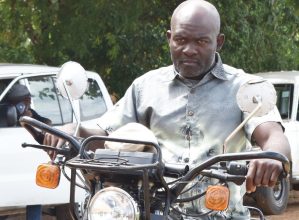Giving life to disaster management

Stranded and perched precariously high up a tree, Ivy Kalichero thought the end had come for her.
Below the tree, water levels were rising. To make the situation worse for her, her phone had dropped into the water, so she had no way of communicating her predicament in this lonely place.
Kalichero said a prayer: “God, save me.”
For seven hours as she held on to life in the tree, God’s name never departed her lips as water from Ruo and Shire rivers joined forces and conspired to sweep her away in her home area in Nsanje.
“I will never forget January 9 2013. Early in the morning on this day, we, members of the Area Civil Protection Committee [ACPC], received a message that floods had struck Mchacha James Village. As secretary of the committee, I was dispatched to the area to assess the situation and talk to communities.
“As I walked to the area, Shire River burst its banks. The floods caught me in the middle of nowhere. I could neither go back home nor proceed to Mchacha James Village.
“Water levels were rising. I realised that I was in grave danger, so I climbed up a tree where I stayed for seven hours. It was only around 2pm that I was able to leave the tree and return home after the water had receded,” said Kalichero, who lives in Group Village Head Sambani, Traditional Authority (T/A) Mlolo, in Nsanje.
It was a narrow escape for Kalichero, just like it is for many people living in flood-prone districts such as Nsanje, Chikhwawa and Karonga.
Many others have not been so lucky.
The memories of January 9 2013 continue to haunt Kalichero so much that as the rainy season unfolds, she fears for her life and those of others in the area.
That is why she is worried that there is little on the ground in the area to show that players in disaster response and management are prepared to deal with the chaos and tragedy that floods bring to people in areas that are vulnerable to natural catastrophes.
“I am worried because when floods strike, we are promised many things that don’t materialise. We need resources such as tents, gumboots, bicycles, boats and raincoats.
“We need at least 30 boats and 10 tents for our catchment area which is T/A Mlolo. Members of the committee need bicycles for mobility to work with communities. I would be happy if we could get the resources by the end of November,” said Kalichero.
Her other concern is that government and partners in disaster management do not coordinate their work. So far, she said the Catholic Development Commission of Malawi (Cadecom), Goal Malawi, Action Aid and government have engaged communities to prepare them for the rainy season.
“Because of lack of coordination among stakeholders, they all end up training us in one aspect of disaster preparedness and management. If they worked together, each organisation would focus on specific areas of interventions, thereby equipping communities with a range of knowledge in disaster response,” said Kalichero.
It is a concern Cadecom shares. According to the organisation’s programme coordinator, Martin Mazinga, coordination would help stakeholders to leverage and share resources in disaster response and management.
“The individualistic approach is also affecting the operation of DRR [disaster risk reduction] actors. For instance, at the national level, there is a DRM Platform which was launched by the Vice-President [Khumbo Kachali] in February 2013, but such networks do not exist at the district level where coordination is also very much needed,” said Mazinga.
He said regular communication and meetings among stakeholders would promote information sharing of implementation strategies, best practices as well as challenges and successes in dealing with disasters.
But Mazinga said one critical missing link is the Disaster Reduction and Management (DRM) Policy which would provide policy direction in disaster response and management in Malawi.
“In the absence of a DRM Policy, vulnerable communities are the most hit because in order to build resilience, there is need for favourable legal frameworks (policies) and standard operating procedures.
“To get the policy operational, Cadecom is lobbying members of Parliament through roundtable discussions about the advantages of having this policy in place, which hopefully means at the next sitting of Parliament the policy and Dodma [Department of Disaster Management Affairs] will be put on the order paper,” said Mazinga, whose organisation is implementing a disaster preparedness and response project with funding from Oxfam.
Executive director of the Centre for Environmental Policy and Advocacy (Cepa) William Chadza said owing to the absence of the policy, the focus is on disaster response at the expense of disaster management.
“As Cepa, we are working with stakeholders to engage the department responsible to lobby for speedy adoption of the policy,” said Chadza.
Principal secretary in the Department of Disaster Management Affairs Jeffrey Kanyinji was not available to comment on the status of the policy which civil society organisations working in the sector are pushing to be enacted into law.
But Kanyinji told The Nation last week that the department is lobbying for the adoption of the policy.
According to Mazinga, the policy is at the signatory stage, waiting for discussion and Cabinet approval.
If only the policy was approved and implemented, well-programmed and coordinated interventions—and not trees—would save Kalichero.





